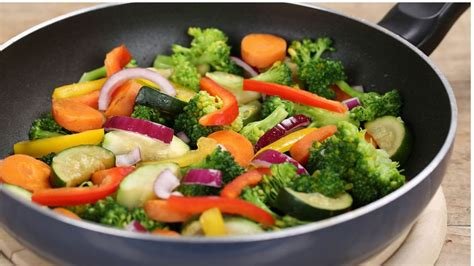In the blog post Top Tips for Creating Gourmet Meals in Your Home Kitchen, readers are introduced to essential strategies for elevating their home cooking. The article begins with an exploration of the fundamental principles of gourmet cooking, emphasizing the importance of quality and creativity. It then provides top tips for selecting ingredients, highlighting how the right choices can dramatically enhance flavors and presentation. Furthermore, the piece delves into mastering cooking techniques that are crucial for achieving gourmet results, encouraging home chefs to experiment with various methods. In the conclusion, key takeaways are summarized, reinforcing the idea that anyone can prepare exquisite meals with practice and attention to detail. This blog serves as a valuable resource for those looking to impress at home while developing their culinary skills.
Understanding The Essentials Of Gourmet Cooking At Home
To create gourmet meals in your own kitchen, it’s crucial to embrace the concept of quality over quantity. Top Tips for achieving gourmet results include meticulous preparation and attention to detail. Start by understanding your ingredients; fresh, high-quality products can dramatically enhance the flavor and presentation of your dishes. Experiment with a variety of textures, cooking methods, and flavor profiles to elevate your meals from everyday fare to gourmet experiences.
When stepping into gourmet cooking, proper techniques play a vital role. Begin by honing your knife skills, as they are foundational to culinary efficiency and presentation. Knowledge of various cooking methods such as sous vide, confit, or poaching can add sophistication to your repertoire. Keep in mind that presentation is just as important as taste; a beautifully plated dish can stimulate appetites even before the first bite.
- Key Elements To Consider
- Ingredient Quality: Choose fresh and seasonal ingredients.
- Cooking Techniques: Master essential cooking methods.
- Flavor Balance: Strive for harmony in flavors with proper seasoning.
- Presentation: Focus on visual appeal to enhance dining experience.
- Creativity: Don’t be afraid to experiment with new combinations.
- Time Management: Organize your cooking process efficiently.
Finally, staying inspired by gourmet chefs and trends can fuel your culinary creativity. Reading cookbooks, watching culinary shows, and even attending workshops can provide you with valuable insights. With every meal, aim to refine your skills and develop your unique style. Remember, gourmet cooking is not just about a recipe; it’s about the passion and artistry you put into each dish, turning your kitchen into a gourmet haven.
Top Tips For Selecting Ingredients To Elevate Your Dishes
When it comes to elevating your gourmet meals, one of the foremost aspects is the selection of ingredients. Choosing the right components can transform a simple recipe into a culinary masterpiece. To ensure that your dishes stand out, it’s crucial to be mindful of your ingredient choices. Here are some Top Tips to guide you in selecting quality ingredients that will enhance your cooking experience.
Steps To Choose Quality Ingredients
- Prioritize freshness: Always opt for the freshest ingredients to enhance flavor and texture.
- Choose local: Supporting local farmers not only benefits your community but also provides you with fresh, seasonal produce.
- Inspect for quality: Look for vibrant colors, firm textures, and avoid any signs of spoilage.
- Understand labels: Familiarize yourself with product labels, especially for meats and dairy, to ensure quality.
- Explore specialty stores: Consider shopping at farmers’ markets or specialty stores that focus on high-quality ingredients.
- Ask for recommendations: Don’t hesitate to seek advice from knowledgeable sellers about the best options available.
Incorporating seasonal produce into your dishes not only supports sustainability but also enhances flavor profiles. Seasonal fruits and vegetables are often more flavorful and nutrient-dense than their out-of-season counterparts. By embracing the use of ingredients that align with the seasons, you can create meals that are not only aesthetically pleasing but also bursting with taste.
Using Seasonal Produce
When you utilize seasonal produce, you also tap into the natural rhythms of agriculture. This drives a deeper connection between your food and the environment. As you plan your meals, consider visiting local farmers’ markets or community-supported agriculture programs to discover what’s in season. Utilizing this approach will not only elevate your dishes but also ensure that your cooking is sustainable and in harmony with nature.
Prioritizing Organic Options
Alongside seasonal produce, opting for organic ingredients can significantly improve the quality of your meals. Organic farming practices often avoid synthetic pesticides and fertilizers, resulting in more wholesome food. When you prioritize organic options, you not only consume better quality ingredients but also contribute to a healthier planet. Always look for organic certifications when shopping, and support local organic farms whenever possible.
Mastering Cooking Techniques For Gourmet Results
To elevate your home cooking to gourmet levels, understanding essential techniques is paramount. The right approach can transform simple ingredients into sophisticated dishes that impress palates. By honing your skills, you’ll not only make food that looks and tastes fantastic but also discover a new level of enjoyment in cooking.
Top Tips for gourmet cooking involve incorporating specific methods that enhance flavor and presentation. Mastery of techniques allows for creativity and precision in your approach. Here are some Essential Cooking Techniques that every aspiring home chef should know:
- Sautéing
- Braising
- Focus on selecting the freshest ingredients available.
- Master basic cooking techniques before attempting complex recipes.
- Experiment with herbs and spices to enhance flavor profiles.
- Invest in quality kitchen tools to facilitate better cooking results.
- Present your meals beautifully; aesthetics are part of the gourmet experience.
Conclusion And Key Takeaways For Home Chefs
For home chefs, creating gourmet meals in your kitchen is a journey filled with exploration and passion. The tips discussed in this article aim to guide you in experimenting with new ingredients and mastering essential cooking techniques. By integrating these approaches, you can elevate your culinary skills and impress your family and friends with exquisite dishes that showcase your creativity.
Implementing these Top Tips in your culinary routine will not only enhance the flavors of your meals but also inspire confidence in your cooking abilities. Understanding the balance between quality ingredients and precision in cooking techniques is key to achieving gourmet results. As you continue to hone your skills, don’t hesitate to adapt recipes and innovate according to your preferences.
Actionable Takeaways:
In conclusion, becoming a proficient home chef is all about practice and a willingness to learn. Remember that gourmet cooking is not limited to fancy restaurants; it’s about bringing joy and creativity to your home. Embrace the process, continue exploring new flavors, and appreciate every dish you create, as every meal is an opportunity to improve and refine your culinary art.









